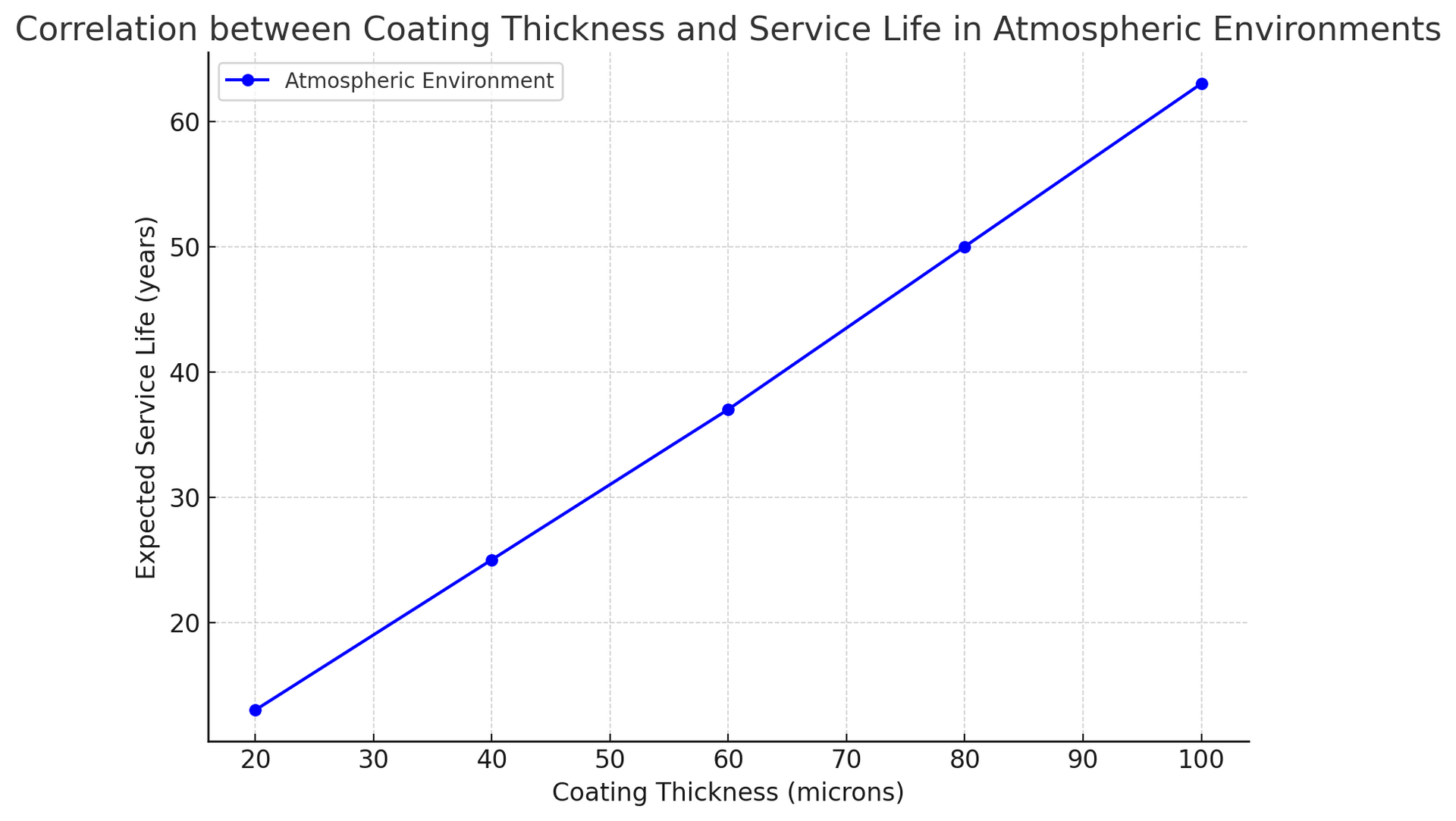Galvanizing Thickness: Standards, Dimensions, and Service Life
Introduction
Galvanizing is one of the most effective methods for protecting steel against corrosion, extending the service life of metallic components exposed to harsh environments. One of the critical aspects of galvanizing is the thickness of the zinc coating, as this largely determines the effectiveness of corrosion protection. Controlling thickness is essential not only to ensure compliance with technical specifications but also to guarantee that treated components deliver adequate durability in service. In this analysis, we will examine the standards governing galvanizing thickness, typical coating dimensions, and how these influence service life.
Standards for Galvanizing Thickness
The control of zinc coating thickness is regulated by several international standards, which specify minimum requirements to ensure effective protection. Among the most relevant are:
ISO 1461: Hot-Dip Galvanizing
Description: This standard specifies the requirements for zinc coatings applied by hot-dip galvanizing on finished steel products and cast iron/steel articles. It includes requirements regarding minimum coating thickness, adhesion, and corrosion resistance.
Minimum Thickness: The minimum required thickness varies according to the thickness of the base material, typically ranging between 45 and 85 microns.
ASTM A123/A123M: Standard Specification for Zinc (Hot-Dip) Coatings
Description: This standard defines coating thickness and uniformity requirements for steel components, iron structures, and zinc alloys. As with ISO 1461, requirements vary depending on component thickness and shape.
Minimum Thickness: Typical coating thickness ranges between 50 and 100 microns, depending on application and product type.
EN 10346: Electro-Galvanizing
Description: The European standard for electrolytically applied zinc coatings, specifying requirements for coating thickness and corrosion resistance properties.
Minimum Thickness: Thickness ranges from 5 to 20 microns depending on application, making this type of galvanizing more suitable for applications requiring dimensional precision.
Table: Typical Galvanizing Thicknesses According to Standards
| Standard | Type of Galvanizing | Minimum Thickness (Microns) | Typical Applications |
|---|---|---|---|
| ISO 1461 | Hot-dip galvanizing | 45 - 85 | Steel structures, outdoor exposed components |
| ASTM A123/A123M | Hot-dip galvanizing | 50 - 100 | Bridges, beams, industrial structures |
| EN 10346 | Electro-galvanizing | 5 - 20 | Precision components, indoor applications |
Relationship between Coating Thickness and Service Life
The durability of galvanizing is closely linked to the thickness of the zinc coating. In general, greater coating thickness provides longer-lasting protection, particularly in corrosive environments. However, optimal thickness must be balanced with other factors such as weight, component dimensions, and aesthetic requirements.
Thickness vs. Service Life in Atmospheric Environments
Description: In typical atmospheric environments such as rural and urban areas, an 80-micron coating can ensure durability up to 50 years, while a 50-micron coating provides around 30 years of protection.
Service Life Chart: The chart below shows the correlation between coating thickness and expected service life in years under atmospheric conditions. As illustrated, greater zinc coating thickness corresponds to longer protection, particularly in typical rural and urban environments.

Thickness vs. Service Life in Marine Environments
Description: In marine environments, where exposure to salt and humidity is high, greater thickness is essential. A 100-micron coating can provide around 20 years of protection, while a 50-micron coating may last less than 10 years.
Applications: These thicknesses are particularly relevant for marine structures such as bridges, offshore platforms, and port equipment.
Advantages and Disadvantages of Different Thicknesses
Advantages of Greater Thickness
Long-Term Protection: Greater thickness provides superior corrosion protection, significantly extending the service life of metallic components.
Applications in Extreme Environments: Essential in highly corrosive conditions, such as marine or industrial environments, where exposure to corrosive agents is high.
Disadvantages of Greater Thickness
Increased Weight: Thicker coatings can significantly increase component weight, negatively impacting structural efficiency.
Higher Costs: Increased thickness requires more zinc, raising production costs.
Advantages of Lower Thickness
Dimensional Precision: Thinner coatings are ideal for components where dimensional accuracy is critical, such as electronic devices or precision parts.
Cost Reduction: Less zinc used results in lower production costs, making the process more economical.
Disadvantages of Lower Thickness
Reduced Durability: Lower corrosion protection, especially in aggressive environments, reduces component service life.
Limited Applications: Not suitable for applications exposed to harsh environmental conditions.
Business Conclusion
Controlling galvanizing thickness is crucial to ensure durability and the effectiveness of protective treatment. Companies must carefully balance the need for long-term protection against weight and cost requirements. Selecting the correct galvanizing thickness, in compliance with standards and tailored to specific operating conditions, is essential to guarantee customer satisfaction and reduce long-term maintenance costs.
Investing in galvanizing process quality, with strict coating thickness control, enables companies to provide products that not only meet corrosion resistance standards but also deliver superior performance across a wide range of industrial applications.



